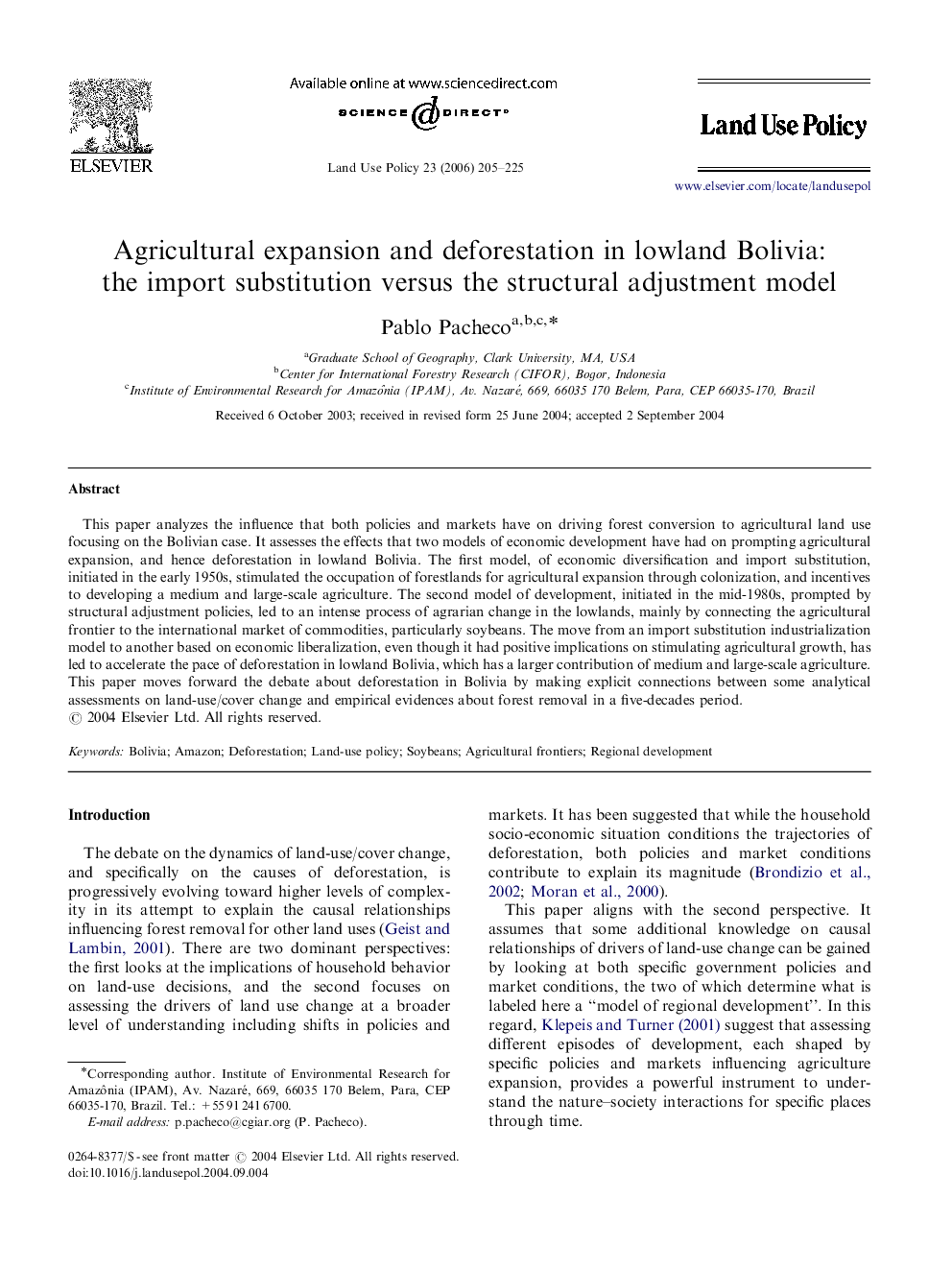| Article ID | Journal | Published Year | Pages | File Type |
|---|---|---|---|---|
| 93792 | Land Use Policy | 2006 | 21 Pages |
This paper analyzes the influence that both policies and markets have on driving forest conversion to agricultural land use focusing on the Bolivian case. It assesses the effects that two models of economic development have had on prompting agricultural expansion, and hence deforestation in lowland Bolivia. The first model, of economic diversification and import substitution, initiated in the early 1950s, stimulated the occupation of forestlands for agricultural expansion through colonization, and incentives to developing a medium and large-scale agriculture. The second model of development, initiated in the mid-1980s, prompted by structural adjustment policies, led to an intense process of agrarian change in the lowlands, mainly by connecting the agricultural frontier to the international market of commodities, particularly soybeans. The move from an import substitution industrialization model to another based on economic liberalization, even though it had positive implications on stimulating agricultural growth, has led to accelerate the pace of deforestation in lowland Bolivia, which has a larger contribution of medium and large-scale agriculture. This paper moves forward the debate about deforestation in Bolivia by making explicit connections between some analytical assessments on land-use/cover change and empirical evidences about forest removal in a five-decades period.
